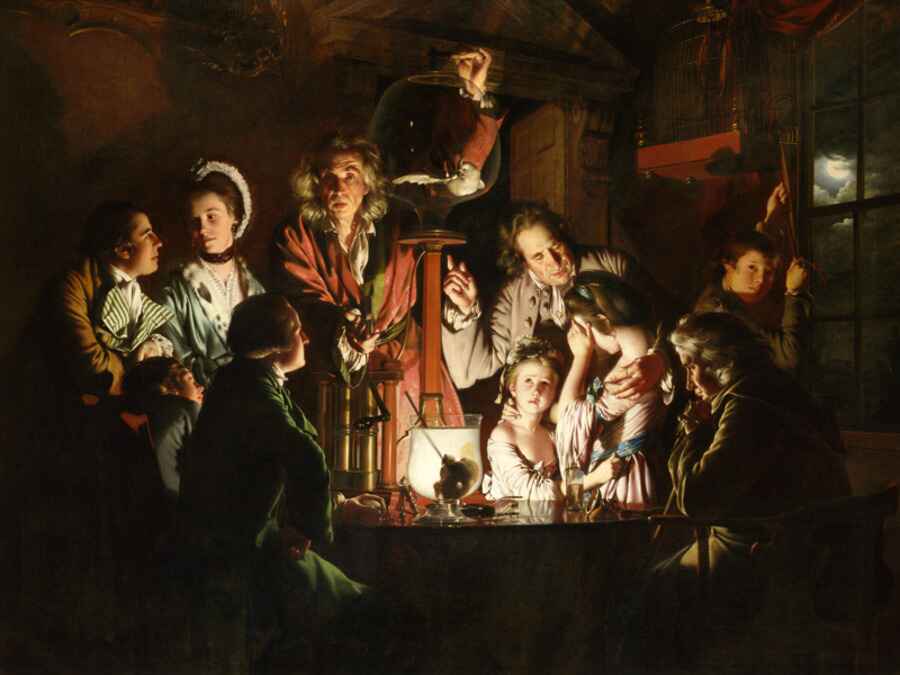Pro Scientia Atque Sapientia [Latin] - For Knowledge And Wisdom
What you don't see with your eyes, don't invent with your mouth. - Jewish Proverb
Understanding Judaism: A Journey Through Faith, Tradition, and Resilience
Judaism, one of the world’s oldest monotheistic religions, is a faith, culture, and way of life that has profoundly shaped human history. Rooted in the covenant between God and the Jewish people, Judaism encompasses a rich tapestry of beliefs, practices, and traditions that have endured for over 3,000 years. From its ancient origins in the Middle East to its global presence today, Judaism remains a vibrant and dynamic tradition, emphasizing ethical living, community, and a deep connection to the divine.
Historical Origins
Judaism traces its origins to the ancient Near East, specifically to the figure of Abraham, who is considered the first patriarch of the Jewish people. According to Jewish tradition, around 1800 BCE, Abraham entered into a covenant with God, who promised to make his descendants a great nation and to give them the land of Canaan (modern-day Israel). This covenant, marked by Abraham’s faith and obedience, is a cornerstone of Jewish identity.
The foundational narrative of Judaism is found in the Torah, the first five books of the Hebrew Bible (Genesis, Exodus, Leviticus, Numbers, and Deuteronomy). The Torah recounts the story of the Jewish people, from the creation of the world to the liberation of the Israelites from slavery in Egypt under the leadership of Moses. At Mount Sinai, according to tradition, God gave the Israelites the Torah, including the Ten Commandments, which serve as a moral and spiritual guide for Jewish life.
Over centuries, the Jewish people established a kingdom in the land of Israel, with Jerusalem as its spiritual and political center. The First Temple, built by King Solomon in the 10th century BCE, became the focal point of Jewish worship. However, the Jewish people faced numerous challenges, including conquests, exiles, and dispersions. The Babylonian Exile in the 6th century BCE, during which the First Temple was destroyed, marked a turning point, leading to the development of synagogue worship and the compilation of sacred texts.
Despite periods of persecution and diaspora, Judaism flourished through adaptation and resilience. The Second Temple was built and later destroyed by the Romans in 70 CE, leading to the further spread of Jewish communities across the world. The compilation of the Talmud, a vast collection of rabbinic teachings, in the centuries that followed provided a framework for Jewish law, ethics, and theology, ensuring the survival of Jewish tradition in diverse contexts.
Core Beliefs
At the heart of Judaism is the belief in one God, who is eternal, all-powerful, and the creator of the universe. This monotheistic principle, encapsulated in the Shema prayer (“Hear, O Israel: The Lord our God, the Lord is One”), is central to Jewish theology. God is understood as both transcendent and immanent, intimately involved in the world and in human affairs.
The covenant between God and the Jewish people is a foundational concept. Jews believe they are chosen to follow God’s commandments (mitzvot) and to be a “light unto the nations” by living ethically and promoting justice. This sense of responsibility shapes Jewish identity and practice.
Judaism emphasizes ethical monotheism, the idea that belief in one God is inseparable from living a moral life. Key ethical principles include tzedakah (charity or justice), tikkun olam (repairing the world), and chesed (loving-kindness). The Torah and later rabbinic teachings provide detailed guidance on how to live in accordance with God’s will, addressing everything from interpersonal relationships to dietary laws.
While Judaism includes diverse perspectives on the afterlife, the focus is primarily on living a meaningful and righteous life in the present. Concepts such as Olam HaBa (the World to Come) and the resurrection of the dead exist in Jewish thought, but they are less emphasized than the here and now.
Sacred Texts and Practices
The Hebrew Bible, known as the Tanakh, is the primary sacred text of Judaism. It is divided into three sections: the Torah (the Five Books of Moses), the Nevi’im (Prophets), and the Ketuvim (Writings). The Torah is the most revered, read in synagogues on a weekly cycle and studied extensively.
The Talmud, a compilation of oral traditions and rabbinic discussions, is another central text. It consists of the Mishnah (oral law) and the Gemara (commentary), providing interpretations of the Torah and guidance on Jewish law (halakha). The Talmud is a dynamic text, reflecting centuries of debate and scholarship.
Jewish practice is guided by the 613 mitzvot (commandments) found in the Torah, which cover ritual, ethical, and communal obligations. Key practices include:
- Shabbat: The Sabbath, observed from Friday evening to Saturday evening, is a day of rest and spiritual reflection. Jews refrain from work and engage in prayer, study, and family time.
- Kashrut: Jewish dietary laws dictate what foods are permissible (kosher), such as avoiding pork and shellfish and separating meat and dairy.
- Prayer: Daily prayers, often conducted in a synagogue, connect Jews to God and community. The synagogue is a place of worship, study, and gathering.
- Holidays: Major Jewish holidays include Rosh Hashanah (the Jewish New Year), Yom Kippur (the Day of Atonement), Passover (celebrating the Exodus from Egypt), and Sukkot (commemorating the Israelites’ journey in the desert). Each holiday combines spiritual reflection with communal celebration.
- Life Cycle Events: Rituals such as brit milah (circumcision for boys), bar/bat mitzvah (coming-of-age ceremonies), and Jewish weddings mark significant milestones.
Branches of Judaism
Judaism is not a monolithic tradition but encompasses diverse movements, each with its own approach to practice and belief:
- Orthodox Judaism: Emphasizes strict adherence to halakha and traditional practices, maintaining continuity with historical Jewish law.
- Conservative Judaism: Balances tradition with adaptation to modern life, allowing for some flexibility in interpreting halakha.
- Reform Judaism: Focuses on ethical principles and individual autonomy, adapting traditions to contemporary values and needs.
- Reconstructionist Judaism: Views Judaism as an evolving civilization, emphasizing cultural and communal aspects alongside spirituality.
- Hasidic Judaism: A mystical branch of Orthodoxy that emphasizes joy, devotion, and a personal connection to God.
These branches reflect the diversity of Jewish thought and practice, shaped by historical, cultural, and geographic contexts.
Cultural and Global Impact
Judaism’s influence extends far beyond its religious dimensions. Jewish culture has contributed immensely to literature, philosophy, science, art, and music. Thinkers like Maimonides, Spinoza, and Einstein, as well as cultural icons like Philip Roth and Leonard Bernstein, reflect the breadth of Jewish intellectual and creative contributions.
The Jewish diaspora, spanning Europe, North Africa, the Americas, and beyond, has fostered a global Jewish identity. Despite centuries of persecution, including the Holocaust, which claimed six million Jewish lives, Jewish communities have demonstrated remarkable resilience, rebuilding and thriving in diverse societies.
Israel, established as a Jewish state in 1948, holds profound significance as the ancestral homeland and a center of Jewish life. It is a focal point for Jewish identity, though Jews worldwide maintain vibrant communities and diverse perspectives on Zionism and Jewish statehood.
Challenges and Modern Context
Judaism today faces challenges such as assimilation, intermarriage, and rising antisemitism. Yet, Jewish communities continue to innovate, blending tradition with modernity. Technology, such as online prayer services and educational platforms, has expanded access to Jewish learning and practice.
The concept of tikkun olam inspires many Jews to engage in social justice, environmental activism, and humanitarian efforts, reflecting Judaism’s enduring commitment to improving the world. Interfaith dialogue and collaboration also play a growing role in fostering understanding and cooperation.
Conclusion
Judaism is a profound and multifaceted tradition that combines faith, ethics, and community in a unique and enduring way. Its emphasis on the covenant, ethical living, and the pursuit of justice has sustained the Jewish people through millennia of challenges and triumphs. Whether through the study of sacred texts, the celebration of holidays, or the commitment to repairing the world, Judaism offers a timeless framework for meaning and connection. For those seeking to understand this ancient faith, Judaism invites exploration of its rich history, diverse practices, and unwavering resilience.









